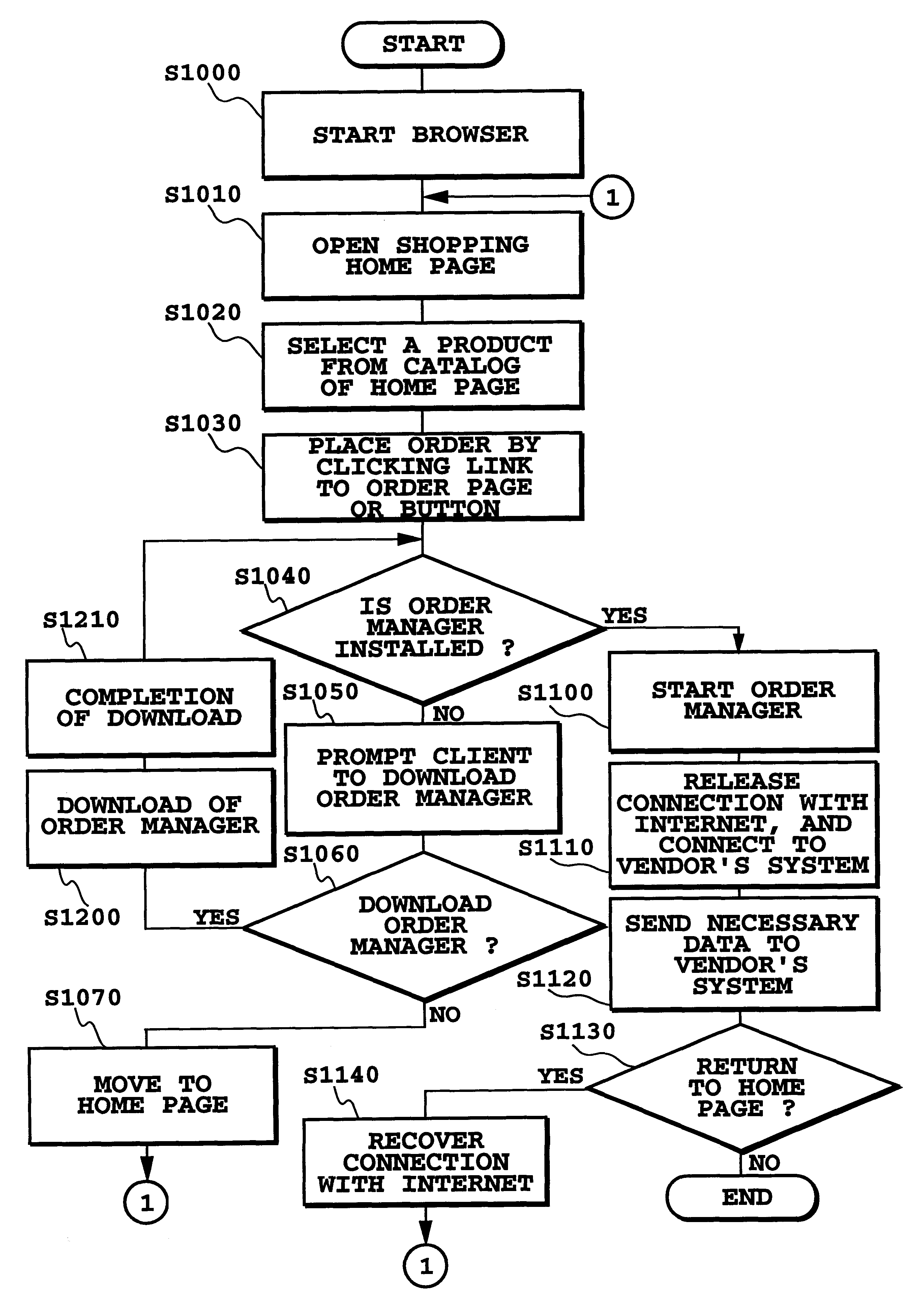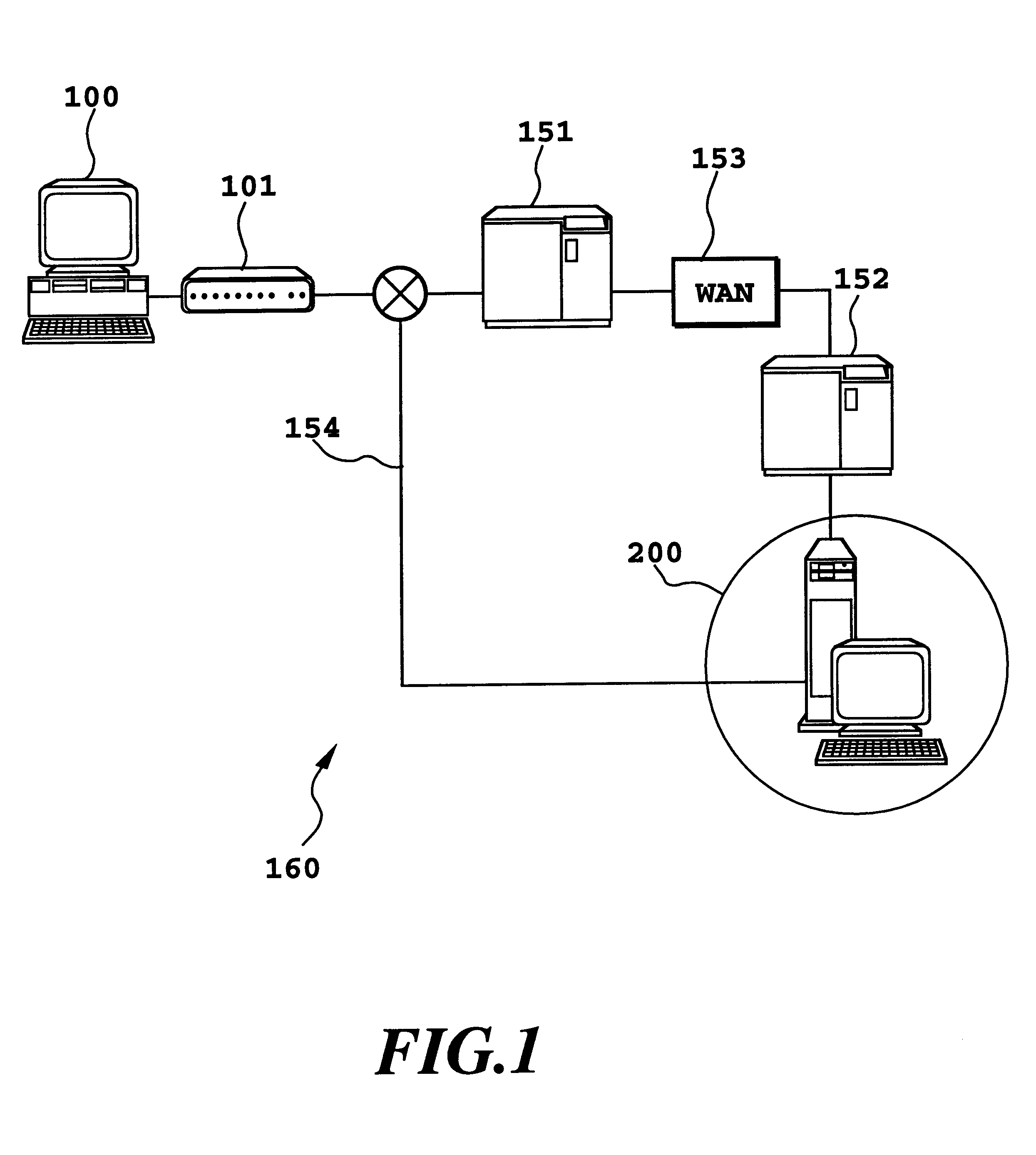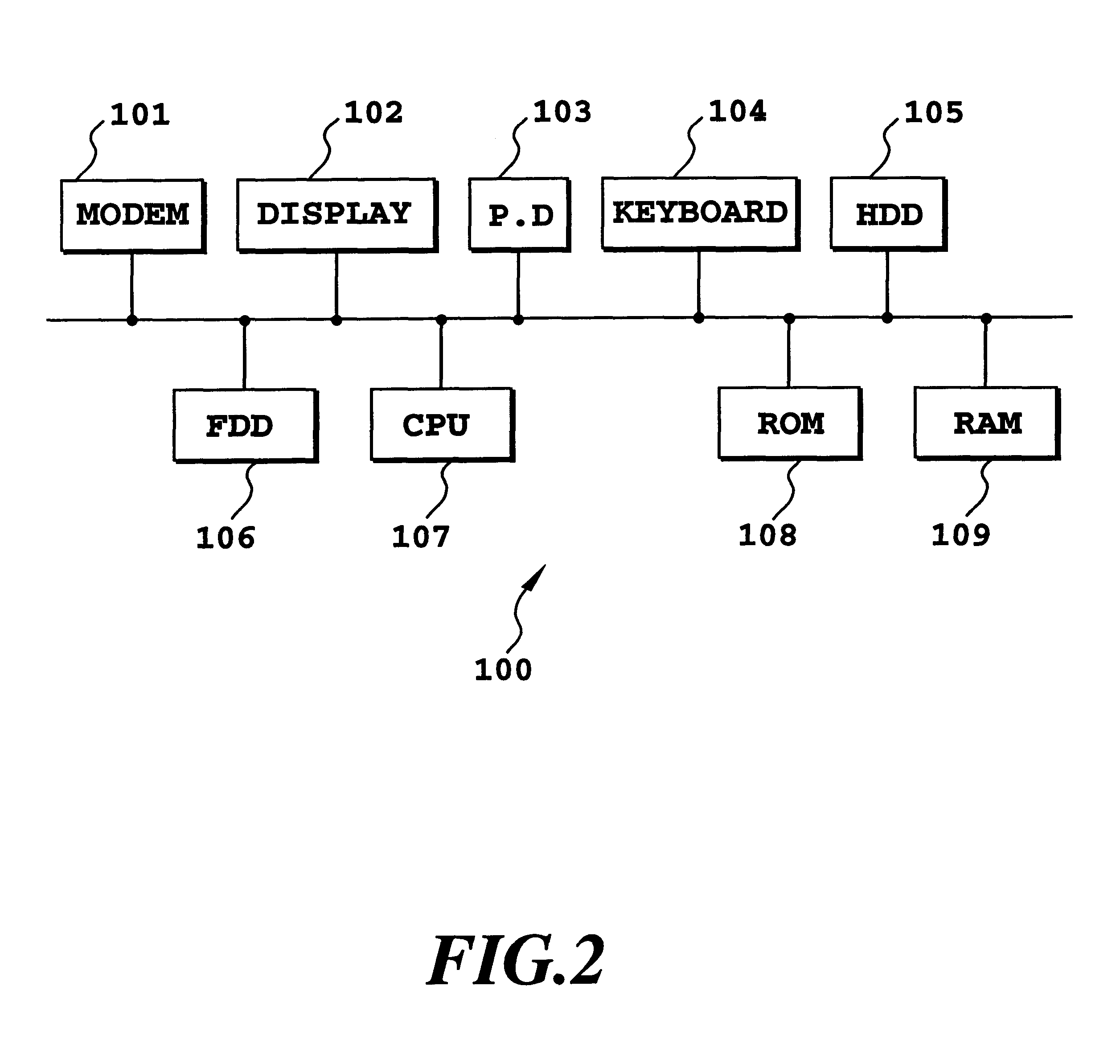Marketing system, information communications method, and recording medium with dual communications means for acquiring and transmitting information
- Summary
- Abstract
- Description
- Claims
- Application Information
AI Technical Summary
Benefits of technology
Problems solved by technology
Method used
Image
Examples
embodiment 1
FIG. 1 is a diagram showing a marketing system in accordance with the present invention.
In FIG. 1, terminal equipment 100 of a client is connected to a public phone network 160 through a modem 101. The terminal equipment 100 is connected with terminal equipment 200 through two types of communications systems. A first communications system is a WAN (Wide Area Network) like the Internet. The terminal equipment 100 is connected to a public phone channel of a WAN 153 through communications equipment 151 of a provider; and communications equipment 152 of the provider provides the terminal equipment 100 with product information in response to its request. Here, the communications equipment 152 is an information server in accordance with the present invention, which is also called a server.
The communications equipment 152 of the provider stores in its storage product information, and the terminal equipment 100 of the client receives the product information of the terminal equipment 200 whi...
embodiment 2
The foregoing embodiment 1 handles a case in which the order information from the client is addressed to the terminal equipment 200 of the vendor. FIG. 14 shows a second embodiment of a marketing system in accordance with the present invention, which is suitable for placing orders with a plurality of vendors. In FIG. 14, portions corresponding to those of FIG. 1 are designated by the same reference numerals, and the description thereof is omitted here. In FIG. 14, the reference numeral 250 designates an accepting center for receiving orders exclusively. The accepting center 250 comprises two communications systems. A first system is connected to the Internet (WAN) 153, and provides home pages of a number of vendors. A second system receives order information from the terminals 100 of clients through the public phone network 154. The accepting center 250 stores the received order information in a storage not shown in FIG. 14, and transmits it to the terminal 200 of a vendor and a ter...
PUM
 Login to View More
Login to View More Abstract
Description
Claims
Application Information
 Login to View More
Login to View More - R&D
- Intellectual Property
- Life Sciences
- Materials
- Tech Scout
- Unparalleled Data Quality
- Higher Quality Content
- 60% Fewer Hallucinations
Browse by: Latest US Patents, China's latest patents, Technical Efficacy Thesaurus, Application Domain, Technology Topic, Popular Technical Reports.
© 2025 PatSnap. All rights reserved.Legal|Privacy policy|Modern Slavery Act Transparency Statement|Sitemap|About US| Contact US: help@patsnap.com



